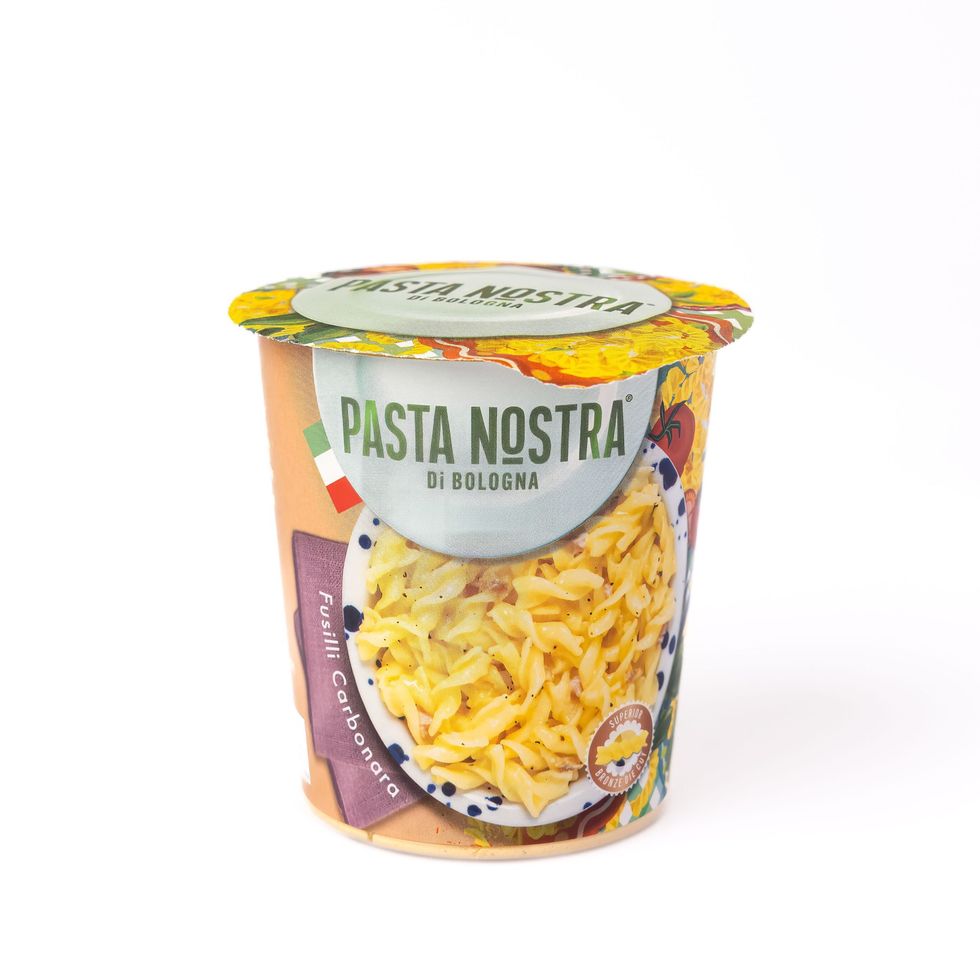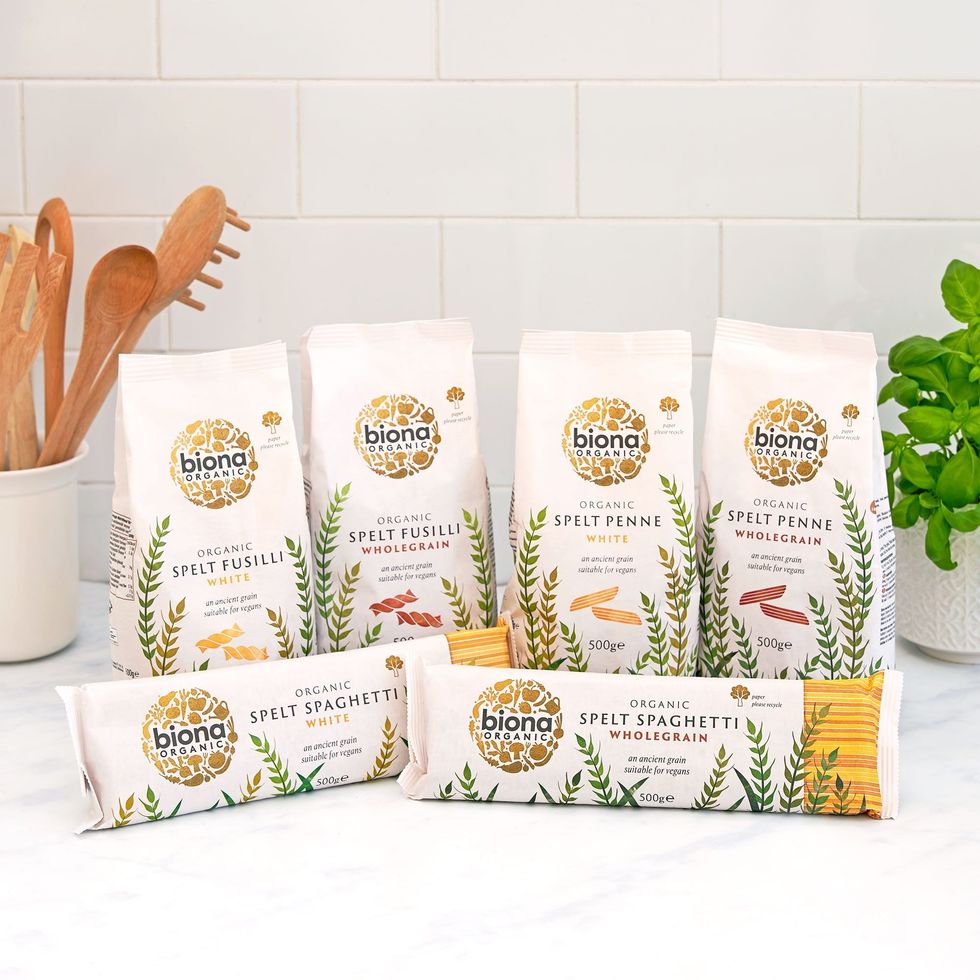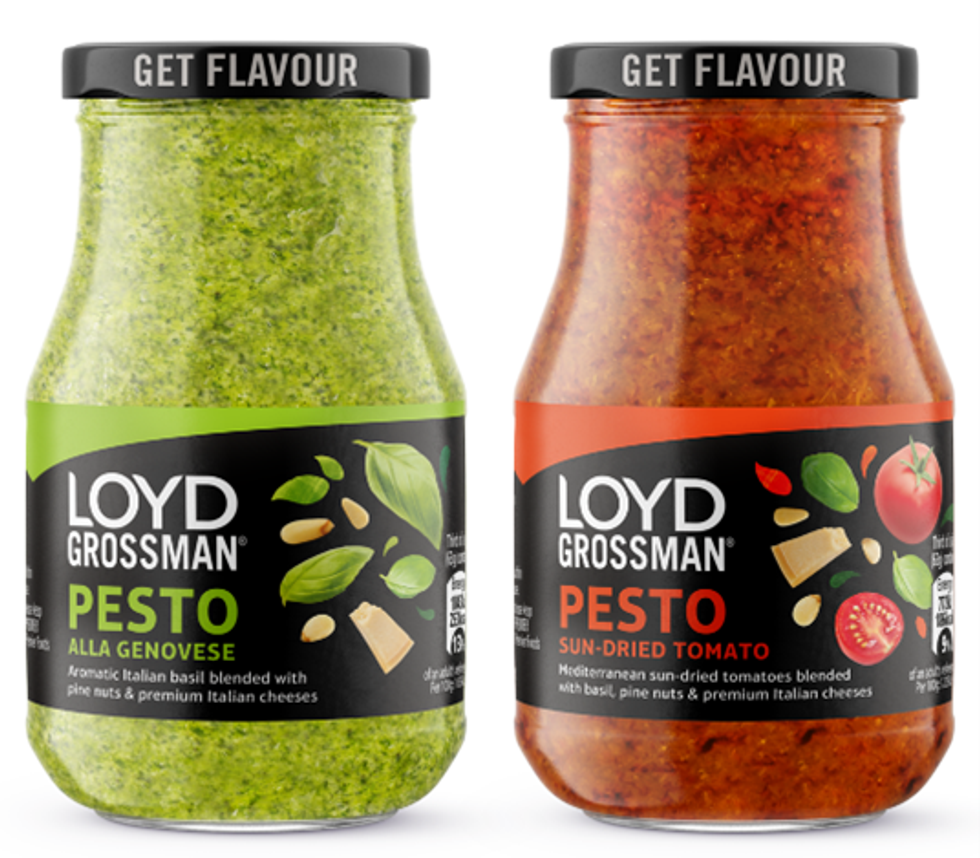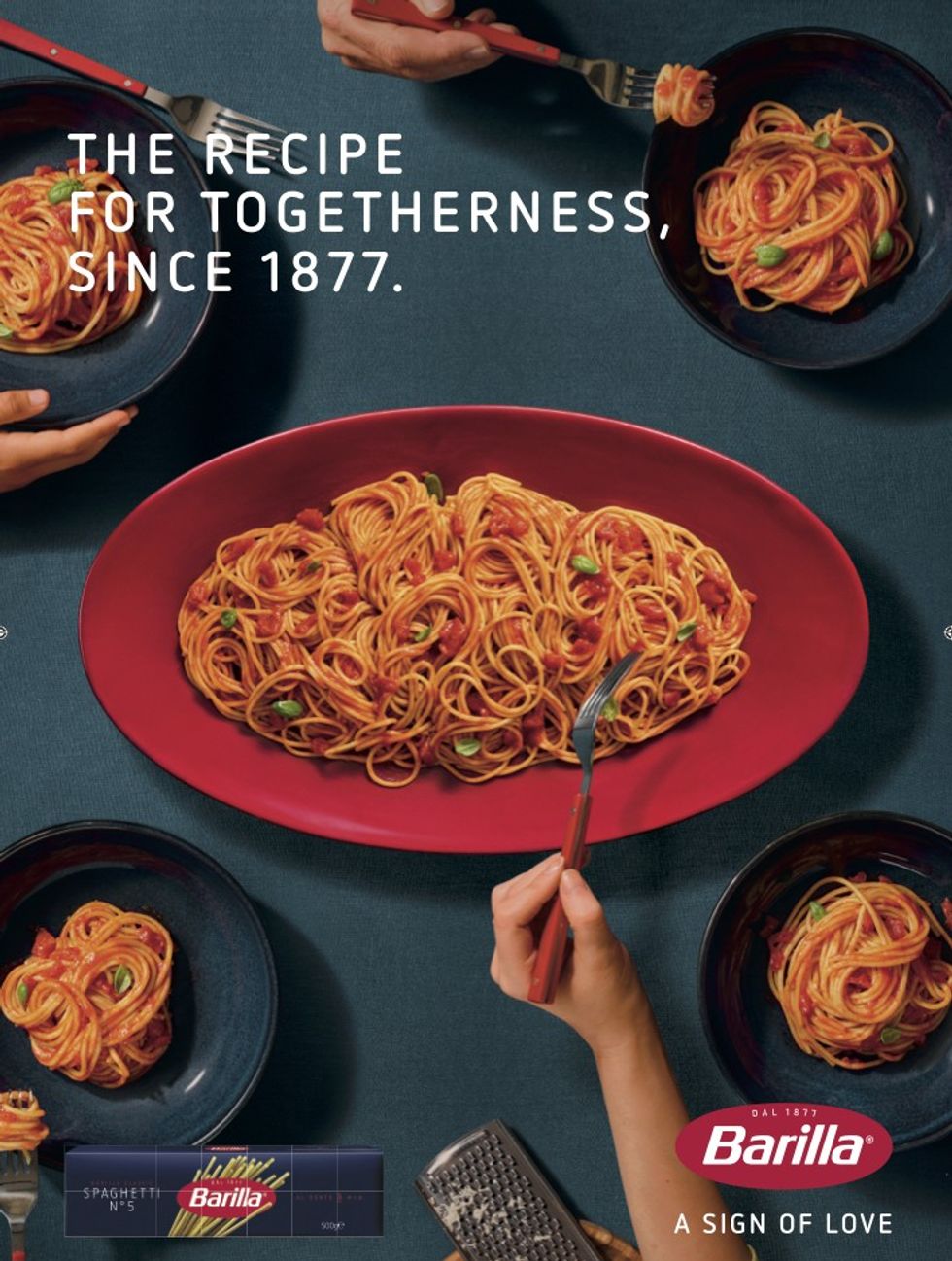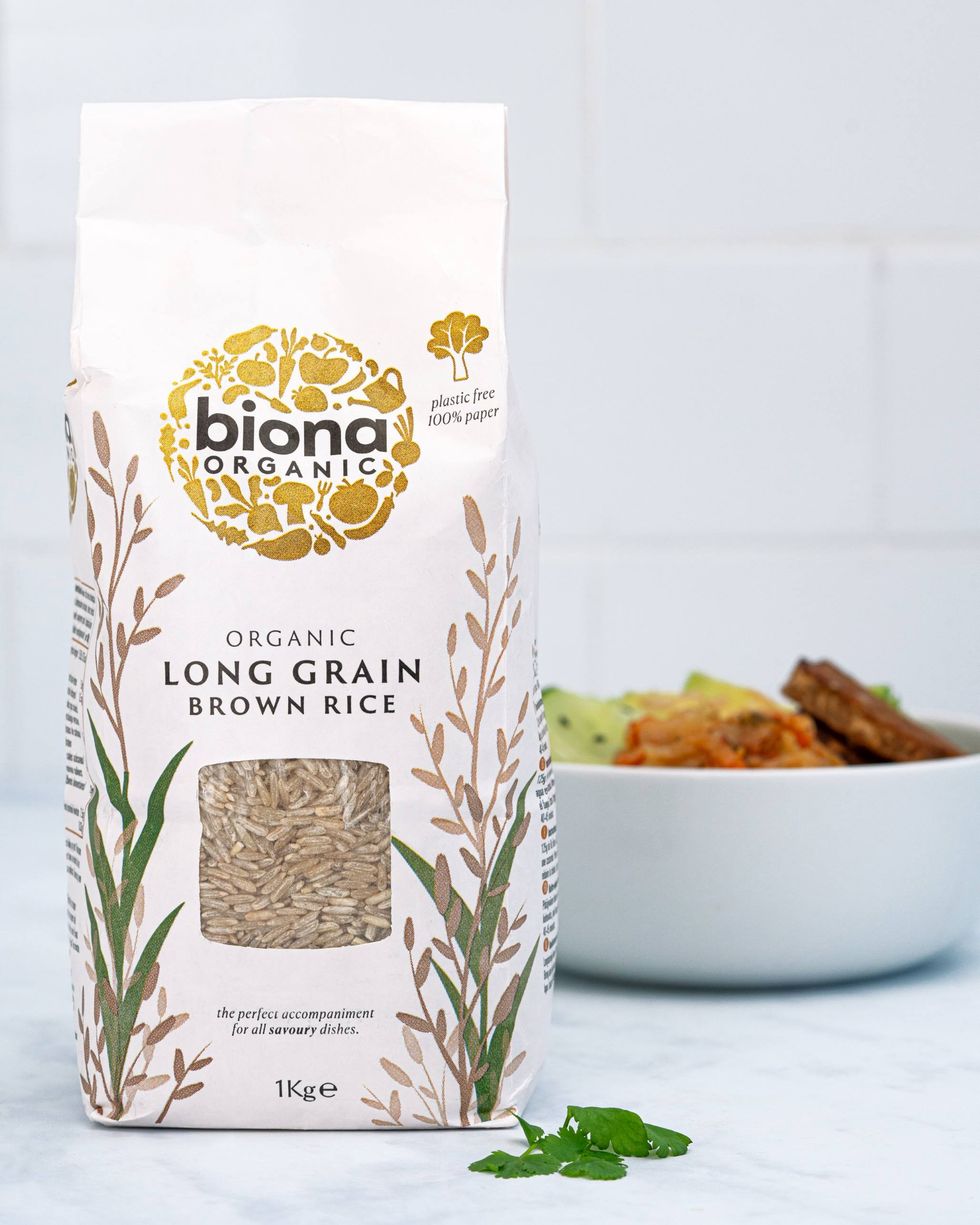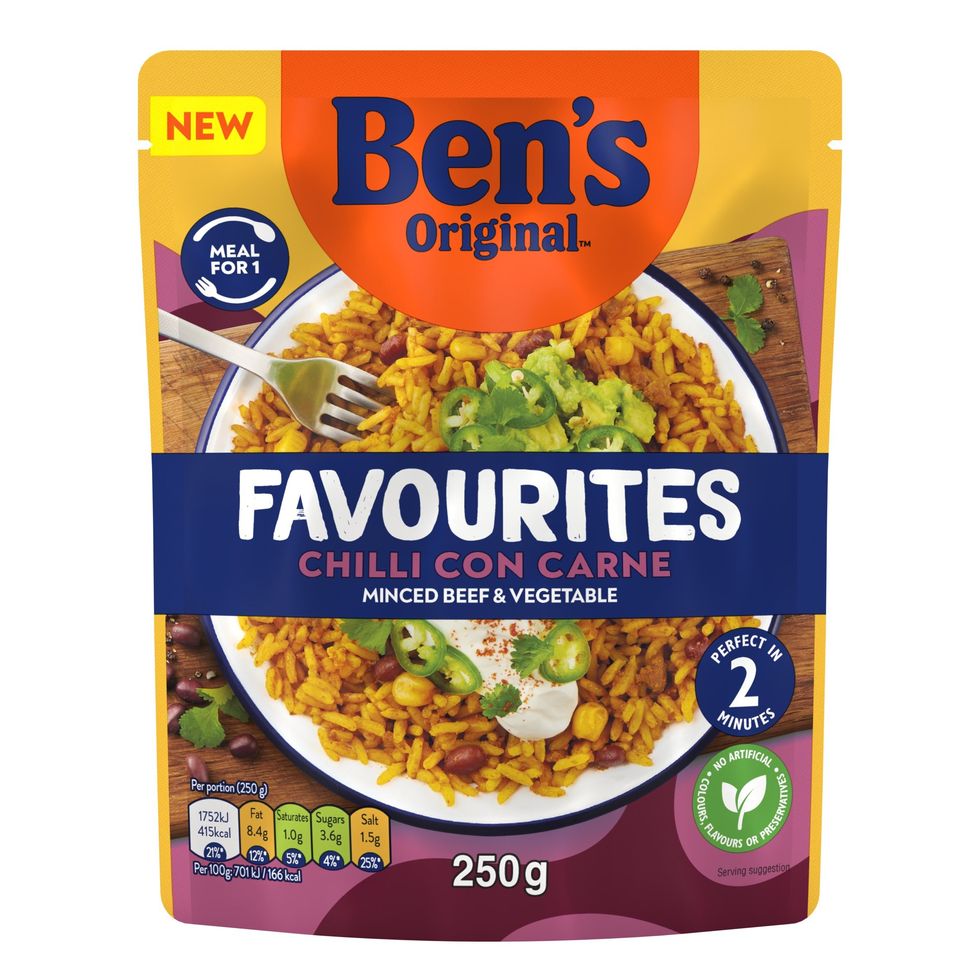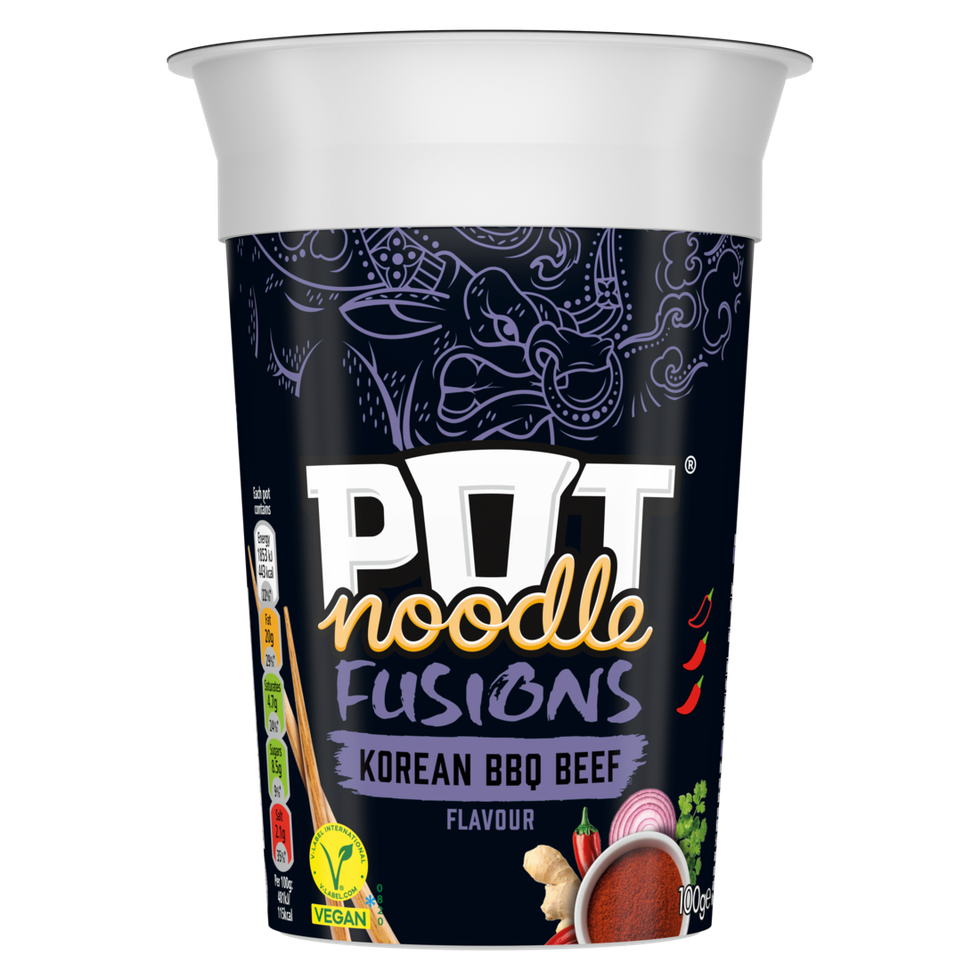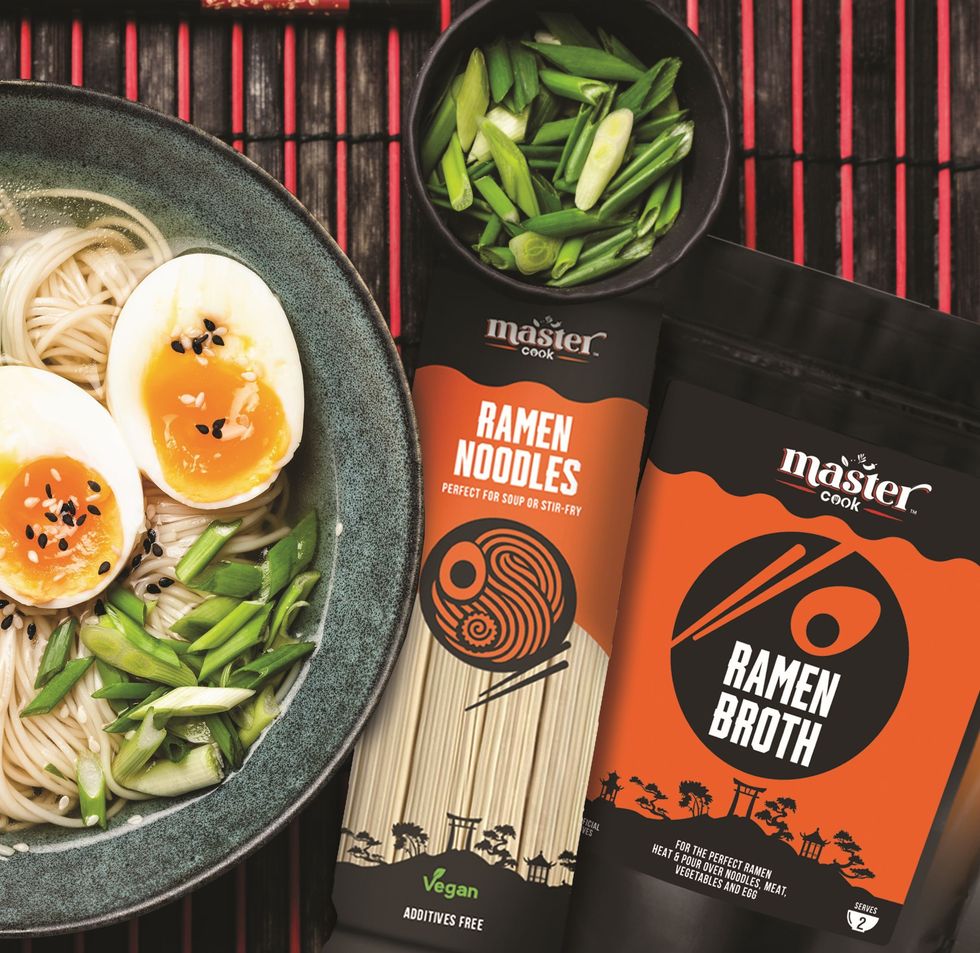Long gone are the days when pasta, rice and noodles were merely dry basic commodity goods in cellophane wrappers and wax paper bags.
They still are this, of course, and no pantry would be complete without its dried spaghetti and pasta shapes, its noodle stack and its bag of basmati – many meals demand these rehydrating champions, and they will always have their place on retailers’ shelves and in the nation’s kitchens.
But they are also so much more, and the action in the industry now is on convenience, flavour, world cuisine and added value: the greatest grocery brains have for some time now been focussing on how these essential basics can be made instant, more colourful and tasty, and generate more margin for both supplier and seller.
The 1970s and 1980s saw the birth of Vesta curries and Pot Noodles (saviour of the school lunchtime!) but things have changed since then – and certainly Pot Noodles with them.
Today, the rich and tasty hinterland of recipes and ingredients are pressed into employment to offer customers an incredibly wide range of instant, cook-in-the-bag, microwave, and of course dried options (ever-more niche, exotic and sophisticated) for these carb champions – and instead of just providing a base to a meal, they have come into their own as fabulously desirable foods and legends in their own lunchtime.
Pasta
“Customers in the pasta category are increasingly seeking products that offer more than just basic carbohydrates,” confirms Carmen Ferguson, Brand Manager at Windmill Organic, the parent company of Biona, a brand that has done so much to change pasta and noodles into objects of high culinary desire.
She reveals that according to recent market research from Mintel, 56 per cent of consumers express interest in not only pasta but also rice and noodles when they contain added healthy ingredients.
One such brand to do this is Pasta Nostra, whose authentic Italian fusilli pasta is made from natural ingredients, using a high-quality preparation process to create a premium product with distinctive flavour profile, made with durum wheat grown and harvested in the fields of Italy, then packed into pots near Bologna, in the Emilia-Romagna region of Northern Italy. The fusilli pasta is pressed through a bronze mould, called a die, then air-dried slowly to create the characteristic Pasta Nostra fusilli pasta texture that soaks up every drop of sauce in each of the six recipes.
It is these artisanal credentials and high-quality ingredients that contribute to Pasta Nostra possessing clean-label nutrition, because also no artificial preservatives, colourings or palm oil are used, and all recipes are non HFSS (high fat, salt and sugar).
Ross Beattie, Managing Director of Beattie Brands which produces Pasta Nostra in Italy said, “If you take an honest look at the instant snack pot category, you’ll see that it is largely dominated by legacy brands and has little to no innovation. Some modern Asian-inspired brands have started to attract a younger and more affluent consumer base but there are no authentic Italian pasta pots, so Pasta Nostra is well positioned to disrupt the market with authentic Italian cuisine that is good enough for the plate, but which is now served in a pot.”
“Good enough for the plate but which is now served in a pot” is an excellent tagline for the revolution in aspiration among instant and pot cuisine over the past few years, as convenience has become uppermost in many consumers’ minds.
“By identifying this gap in the UK market for a proper pasta which is healthy and authentically Italian, Pasta Nostra will satisfy the needs of consumers who are poorly served with the current ranges of pasta pots available," said Beattie Brands Marketing Director, Chris Lewis.
Overall, Ferguson concludes, consumers want pasta products that align with their health goals without compromising on taste or convenience.
Pasta Nostra instant fusilli pasta pots are available in six flavours, two containing meat - Bolognese, Carbonara; three vegetarian options – Tomato & Mozzarella, Cheese & Pepper and Mushroom; and one that is suitable for vegans – Arrabbiata. Each recipe is 70g and when boiling water is added to the fill line, provides a 250g serve, with calories for the different flavours ranging from 233-263 kcal per pot.
Pasta Nostra has a suggested retail price of £1.75 per pot.
Talking of taste, Italian sauce brand Loyd Grossman has launched new Pesto Alla Genovese and Pesto Sun Dried Tomato sauces, aiming to elevate midweek meals and plain old pasta with sophisticated ingredients
The brand says the opportunity is ripe within pesto and there is a real space for a tried and trusted brand, that is already known for its taste and quality, to help retailers tap into the subcategory’s full potential and to bring new shoppers into the aisle.
Makers Premier Foods points out that the total market value of Italian sauces is £356m and within this pesto holds £67m [Circana], showing a strong potential for pesto, and that the subcategory demonstrates a lot of headroom for growth with only 26.7 per cent penetration, compared to 71.2 per cent penetration in total pasta sauces [Kantar].
“With 25 years of experience in pasta sauces, Loyd Grossman is ready to attract new and affluent shoppers into pesto to help grow the subcategory. The sauces are made from simple and high-quality ingredients such as pine nuts, sundried tomatoes, Italian basil, pecorino and parmesan – allowing consumers to recreate an authentic Italian experience at home,” Premier Foods said.
Loyd Grossman also recently added a Tomato & Mascarpone sauce to its line-up of products, as it targets new, younger shoppers looking for more indulgent taste profiles.
Meanwhile, pasta sauce maestros Barilla recently returned to the nation’s TV screens in a campaign to capitalise on the 147-year-old brand’s excellent 4.2 per cent MAT growth in 2024.
“Getting Barilla back on screen shows retailers that we’re determined to give them the high-profile support they’ve been demanding from brands," said Peter Butler, Managing Director at Barilla’s UK distributor, Euro Food Brands. "Together with further promotional work, the campaign will help us grow sales of this authentic Italian brand still further – whether in dry pasta, pesto or sauces.”
Alberto Costella, Marketing Manager for Export Markets at Barilla, added: “In Italy, Barilla is the number one pasta brand and with the UK being an important market, we’re looking to achieve the same position here – Barilla is ready to play a key role in the category. The TV campaign is a significant further investment aimed at increasing Barilla’s awareness and consideration in the UK. Our vision is to be the one-stop brand in pasta meals, offering shoppers the widest choice and bringing value to the category.”
Rice
The immediate good news is that India – probably the biggest exporter of rice and which accounted for more than 40 per cent of the world's rice shipments in 2022 (22.2 million metric tons out of a total of 55.4 million) – has removed most of the export curbs it slapped on the trade in 2023. This year’s monsoon has been kind, and the rains are “expected to boost crop yields amid overflowing stocks in state granaries” according to Reuters, and high rice prices are set to come down again.
Carmen Ferguson says that the wider rice market experienced a healthy uptick from Q1 2023 to 2024 with a 15 per cent increase in sales in one of the UK’s biggest online retailers. “At Biona, we have seen a huge 43 per cent surge in our rice category sales,” she adds, “driven in part by our convenient Biona organic easy-cook brown rice that grew by 48 per cent YoY, emphasizing the demand for healthy products that fit into consumer’s busy lives.
Other popular rice products in Biona’s broad range include its organic risotto rice, white and brown basmati rice and also sushi rice: “All the products in our rice range come in innovative paper packaging, which is unique in the category and proves very popular with consumers who care about minimising their packaging waste.”
Mars Food and Nutrition UK has unveiled the first products to spearhead its brand-new cupboard-ready meal range, marking the start of a multi-year innovation pipeline for Ben’s Original and Dolmio.
With the “heat and eat” trend growing by seven per cent annually and a projected UK market size of £1bn by 2028 [Nielsen], the ready-meal occasion is on the rise. Known best for being cupboard staples, Ben’s Original and Dolmio are now responding to changing consumer preferences for convenient, easy and healthy meals at home or on-the-go.“We know people want to enjoy healthy, tasty meals, but often don’t have the time to prepare them from scratch. This insight has driven our ready meal innovation strategy which is all about giving consumers a range of tasty and nutritious meals that can be made in minutes,” Nick Reade, general manager of Mars Food and Nutrition Europe, commented.
Ben’s Original Favourites and Lunch Bowls are the first ranges to launch, rolling into convenience (after debuting earlier in the year in the mults) just about now.
The Lunch Bowls are a healthy range of grain and vegetable bowls that can be enjoyed hot or cold, full of textures and flavours. The range contains eight different grains and products high in fibre and a source of protein.
Ben’s Original Favourites are ready-to-eat rice-based dishes with familiar flavours from some of the nation’s most popular meals, bound to elevate mealtime. Containing no artificial colours, flavours or preservatives, the range is packed full of a large variety of plants and vegetables.
“Ben’s Original Favourites and Lunch Bowls will join an existing line-up of exciting products that have hit shelves in recent years, including Ben’s Original Plant Powered and Dolmio Pronto pasta products,” added Reade.
Noodles
“When it comes to Noodles, affordability, health and convenience are key factors driving the demand, especially during difficult times such as the Covid pandemic which showed a surge in consumption, as well as the cost-of-living crisis,” Ferguson explains.
She says that, as in many categories, consumers are becoming increasingly concerned about ultra processed food and are instead looking for something healthier and more natural.
“So, it’s no surprise our organic noodles are also experiencing strong volume growth, up 64.5 per cent YoY, with a 49.6 per cent sales value increase from January to April 2024, compared to the same period in 2023. Our Biona organic spelt noodles are proving the most popular, especially amongst consumers looking for a much healthier alternative to some of the better-known instant noodle brands out there which have particularly high levels of sodium in them.”
This is clearly the Age of the Noodle, and the NPD that we are seeing confirms it – and instant noodles are once again becoming a cupboard staple after a makeover spurred by a social media trend, supermarket sales and search data show.
Sales of instant noodles have risen by 50 per cent year on year on Ocado’s website, while searches for ramen noodles have jumped by 35 per cent.
Searches for ingredients to upgrade the quick meal are also up. Chilli oil searches have increased by 48 per cent, crispy onions are up 27 per cent and seaweed about 20 per cent in September this year, in comparison with 2023.
According to Jonny Forsyth, senior director of Mintel’s food and drink division, the market for instant noodles had evolved, and brands are now using influencers to push their product.
“In recent years, they have been marketed on TikTok to engage younger audiences through creative and interactive content. Brands are tapping into TikTok’s short-form video format to resonate with gen Z,” said Forsyth.
The classic Pot Noodle has also risen in popularity, with sales up 10 per cent year on year, owing to many of the recipes seen on social media that feature the popular South Korean Buldak instant ramen noodles.
Just last month Pot Noodle released a new flavour in its successful Fusions range, Korean BBQ Beef. This innovation taps into the fast-growing food trend of Korean street food and delivers the bold flavour that Pot Noodle consumers expect from the brand
The noodle category is driven by impulse purchases, so unique and on-trend flavours encourage trial of new products, which helps retain loyalists and recruit new consumers. Taste is also the most important factor that motivates a consumer’s decision to purchase pot or packet noodle products, with 77 per cent of shoppers citing it as very important.
Pot Noodle Fusions Korean BBQ Beef is available now exclusively at Co-op for three months and will roll out to the wider grocery channel from January.
Elsewhere in the noodle landscape, Organic fine foods specialist Clearspring has added three new products to its popular Organic Thai range: Organic Gluten Free Black Rice Noodles, Organic Gluten Free 100 per cent Brown Rice Vermicelli Noodles and an organic, gluten free and plant-based Pad Thai Sauce.
“We are very proud to finally introduce these three new additions to our Organic Thai range," said Maria Dawson, managing director at Clearspring. “Over the past few years, we have seen demand grow for our existing noodles from Thailand and wanted to offer our customers more choice in the category with the addition of two new noodles which perfectly complement our existing Thai products,”
The Black Rice Noodles are made using finest quality wholegrain brown and black rice, which is an ancient grain renowned for its delicate nutty flavour. It helps give the noodles a firm texture and unique colour which adds contrast when paired with vegetables in Pad Thai, Asian soups and noodle salads.
The Brown Rice Vermicelli Noodles are a thin variety of rice noodles made in Thailand using organic wholegrain brown rice for a firmer texture and delicate nutty flavour. Clearspring Organic Vermicelli Noodles are cut shorter, making them easier to cook with, and are great at absorbing flavour. Ready in just three minutes, they are perfect for creating sumptuous Asian soups, stir-fries (and even sweet vermicelli puddings).
Clearspring Organic Pad Thai Sauce is the UK’s first organic and vegan Pad Thai sauce. It’s easy to use to create a quick and sumptuous Pad Thai. It is packed full of flavour and perfectly captures the essence of a good Pad Thai sauce with beautiful savoury, tangy and sweet notes, whilst being added refined sugar free.
Despite the German origin of the name, noodles are decidedly Oriental in flavour these days, and global food importer and distributor Empire Bespoke Foods has launched its Master Cook "Asia” collection of authentic, easy-to-cook meal kits, noodles and condiments inspired by the evocative flavours and recipes of Japan, Korea and India.
The range comprises four easy to prepare Japanese meal kits (Katsu Curry, Sesame Teriyaki, Curry Udon and Yaki Soba), plus Ramen, Udon and Sobadry noodles (ideal for soup or stir-fries), Soy sauces (Premium, Dark and Light), Ramen Broth and Classic Kimchi (spicy fermented vegetables). The meal kits and the condiments (excluding Ramen broth) are all suitable for vegan and vegetarian diets.
Master Cook ‘Asia’ is the first range extension to the original Master Cook brand launched last year. Each kit contains pre-measured ingredients to add to the consumer’s preferred protein or vegetables, to help create chef-crafted meals, at home, within 15 minutes.
“Our long-standing relationships with the finest Asian suppliers have helped us create this truly authentic and high-quality range,” commented Upuli Ambawatta, brand manager at Empire Bespoke Foods.
“The Master Cook recipes have been developed by chefs who possess a deep understanding of aromatic ingredients and traditional culinary techniques, and who have drawn on their extensive knowledge and experience to create these delicious and convenient meal solutions.
“For consumers, the kits help deliver authentic and delicious meals while empowering them to confidently explore bold Asian flavours without spending excessive time or effort in the kitchen,” added Upuli. “For retailers, the range offers a valuable opportunity to make the most of growing consumer demand for high quality authentic Asian meals and convenient ‘at home’ taste adventures.” The RRPs for the range go from £1 – £3.75.
It’s clearly time to give shelf space to more of these no-longer-basic, no-longer-dry ingredients.






